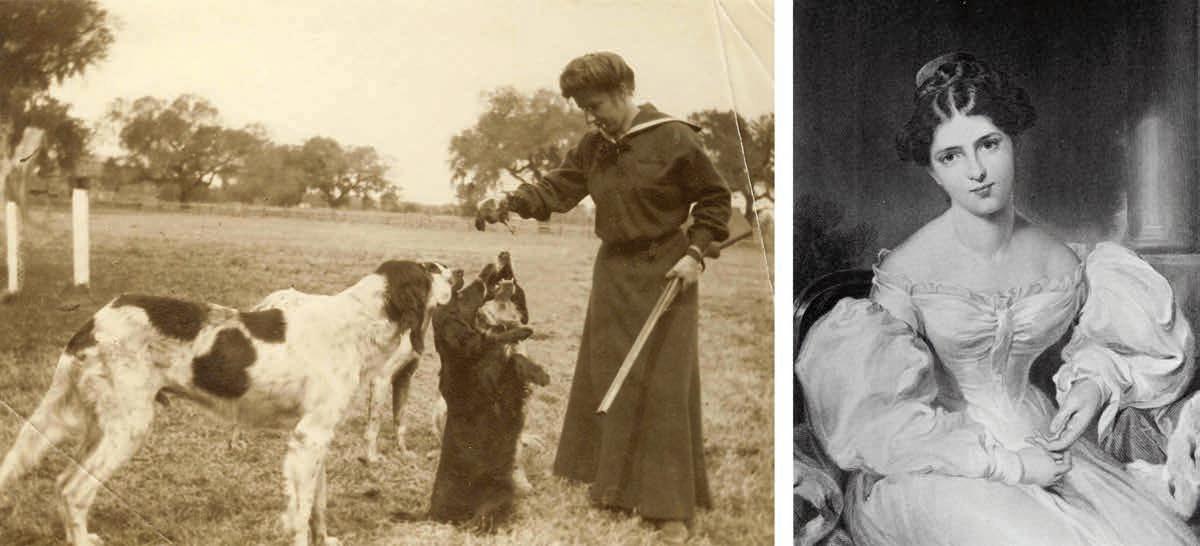
2 minute read
Women in the Plantation Era
oak trees serve as a beautiful reminder of Anna’s care and pride for her coastal home. You can get a glimpse into her world by reading Anna: Letters of a St. Simons Island Plantation Mistress, 1817-1859 , a collection of more than 150 letters written by King detailing everyday antebellum coastal Georgia life.
Another woman who left an indelible mark in the Golden Isles as a plantation owner was Ophelia Dent (1886-1973).
Initially established by William Brailsford as a rice plantation around 1806 and managed by Brailsford and his son-in-law, James Troup, Hofwyl-Broadfield Plantation became the property of Troup’s children. Hofwyl House was built in the 1850s by Troup’s daughter Ophelia and her husband George. When rice production declined after the Civil War, Ophelia and her sister Miriam rescued the family plantation from debt by converting the property to a dairy farm. The property is now managed by the Georgia Department of Natural Resources. Today visitors to the state historic site can see the house just as it was when Ophelia Troup Dent’s granddaughter (also named
Ophelia) left it to the state of Georgia upon her death in 1973, as stated in her will “for use for scientific, historical, educational and aesthetic purposes.” Antiques collected over five generations remain in the house as well as a museum with a model of a working rice plantation and film about plantation life. In addition to tours of the property, there are holiday events and a variety of programs both educational and recreational hosted by Friends of Hofwyl-Broadfield Plantation at the site throughout the year.
A more controversial figure who is frequently mentioned in relation to coastal Georgia’s plantation era is Frances Anne “Fanny” Kemble (18091893). While Kemble’s time on coastal Georgia plantations was limited to about four months, her impressions of that time, published in 1863 as Journal of a Residence on a Georgia Plantation , became a classic and reliable source about plantation life and conditions in which slaves lived for scholars and historians, despite the controversy that surrounded it.
Born into England’s most prominent family of actors, Fanny made her own theatrical debut on the London stage at age 19. Not only recognized as a brilliant actress, but she was also an accomplished musician and voracious reader who was passionate about writing. She spoke fluent French and also enjoyed horseback riding. Naturally Pierce Mease Butler found Fanny enchanting when he met her during a theatrical tour of America in 1832. Butler, the grandson of Major Pierce Butler, one of the nation’s founding fathers, a Revolutionary War veteran, and Georgia plantation owner, wooed Kemble and married her in 1834. The marriage was a disaster from the start, and when Butler inherited his grandfather’s plantations on Butler Island and Sea Island, the relationship deteriorated further with Fanny’s abolitionist views clashing harshly with Butler’s role as a slave owner. Butler brought Fanny to Georgia in hopes that seeing the plantations in operation would convince her of the need for slave labor, and Fanny went hoping to convince Butler of the merits of emancipation. Neither was successful and Fanny left after only four months.
She compiled letters that she had written to her friends about slavery and her journal entries recounting her days at the plantation into a book but was pressured by the Butler family not to publish. Pierce and Fanny divorced in 1849 and the Butler family remained in turmoil and splintered by their divided views over slavery. Fanny finally published her journal in England in 1863, 22 years after her time in Georgia, reportedly triggered by her native country’s hostility toward the North and the Emancipation Proclamation issued by Lincoln. When the American version was published later that year, it was vilified by White Southerners and attempts to discredit her account continued for more than a century. One of the most recognized rebuttals was that made by Margaret Davis Cate in 1960. For such a short time spent on the coastal Georgia plantations, Fanny Kemble made a big splash with her memoir that continues to ripple to this day.











